11. Brigid O’Shaughnessy (Mary Astor) – The Maltese Falcon (john Huston, 1941)
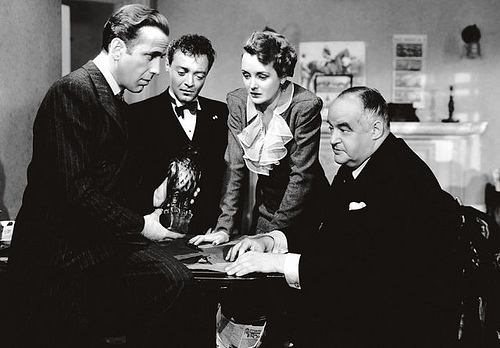
Predominantly regarded as the film that kicked off the film noir movement, John Huston’s cynical and witty exploration of an urban underworld presents memorable performances from both Humphry Bogart (as Sam Spade) and Mary Astor. Set in San Francisco, Sam, a private investigator, must balance he’s relations between a group of devious criminals, and a woman he won’t let himself trust, as he pursues a McGuffin type artefact, referred to as The Maltese Falcon.
“You aren’t exactly the person you pretend to be, are ya?!”
Brigid presents herself as timid. From her conservative attire, to her softly spoken tone of voice, she works to put men at easy. Brigid claims to be ignorant and weak, because if men see her this way, she then has the upper hand. Nevertheless, what separates this film from most noirs, is that Sam is onto Brigid’s facade from the get go, and in a world where people see the worst in each other, Brigid’s professed love of Sam is no match for he’s pessimistic intuition.
12. Madeleine Elster (Kim Novak) – Vertigo (Alfred Hitchcock, 1958)
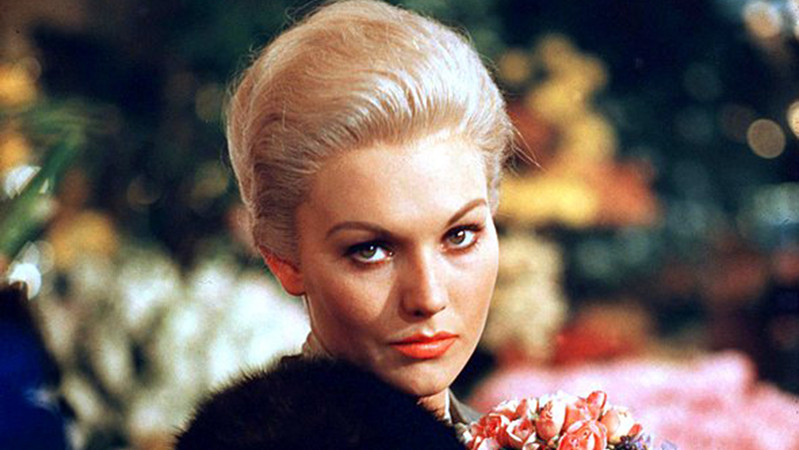
The master of suspense delivers a voyeuristic cat and mouse thriller, that has the ambience of a surreal dream. Set in San Francisco, the narrative follows Scott Ferguson (James Stewart), an ex-detective suffering from vertigo and PTSD, who is hired to follow his friend’s peculiar wife, Madeleine. Nevertheless, things get convoluted when Scott falls in love with this woman, who appears to be possessed.
Death is a prominent theme in Vertigo, and Novak’s portrayal as Madeleine is the embodiment of that theme. She plays a sleepwalking siren, who depicts a ghost-like figure as she glides through forests and cemeteries, dressed in all white. Her eyes are a phantom like green, and when she talks it is in an angelic tone.
Madeleine’s dangerous aura is generated through her mystique, as she lures Scott from one perilous situation to the next, the way a siren would in Greek mythology. She is also shown as a silhouette figure in several scenes, and this allows the audience, as well as Scott, to interoperate her mysterious character for themselves.
13. Martha Ivers (Barbara Stanwyck) – The Strange Love of Martha Ivers (Lewis Milestone, 1946)
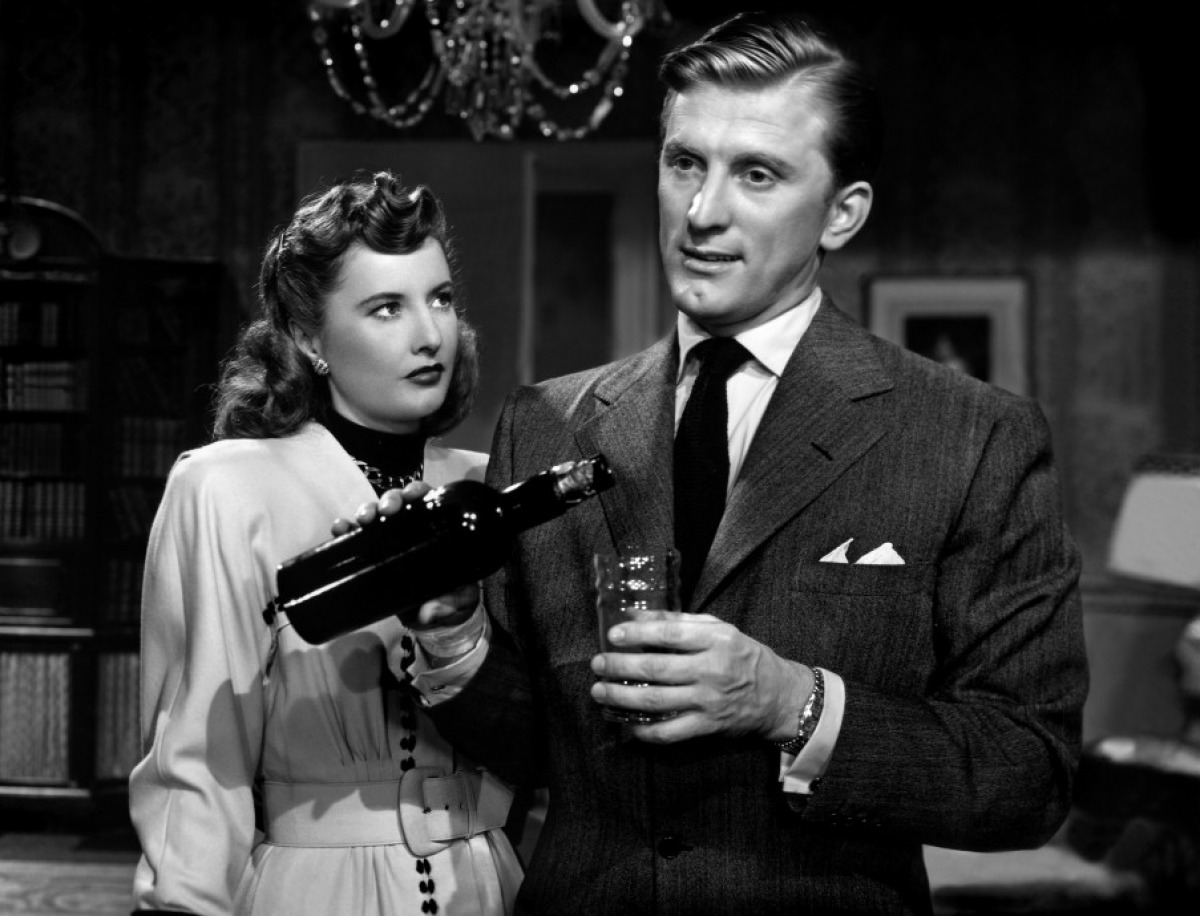
Lewis Milestone’s psychological crime drama has the feeling of an epic, as it spans from the early years of its three main characters, to their lives as adults, telling the tale of how the decisions we make as children, can go on to dictate our lives as adults. As a noir, the feature stands out amongst others of the movement. This is due to the lengths the film goes to, to humanise Martha Ivers, from the childhood scenes with her oppressive aunt, to the act of murder that follows her as an adult, we see how she became the woman that she is.
“A little girl in a cage, waiting for someone to let her out”
The earliest scenes play out as a femme fatale origin story, as we see how Martha prefers the life of excitement and danger with her friend Sam (Van Heflin), over her friend Walter (Kirk Douglas), who is well mannered and follows the rules. We then see the true potential of Martha’s maleficence, when she has no problem killing her aunt and blaming another man.
As an adult, Martha is wealthy and successful, yet she appears stiff and reserved, almost content with her position at times. That is, until she reconnects with Sam, the only person who she loves and would be selfless for, and this is because she feels that he is the only person who truly knows her.
14. Laura (Nora Zehetner) – Brick (Rian Johnson, 2005)
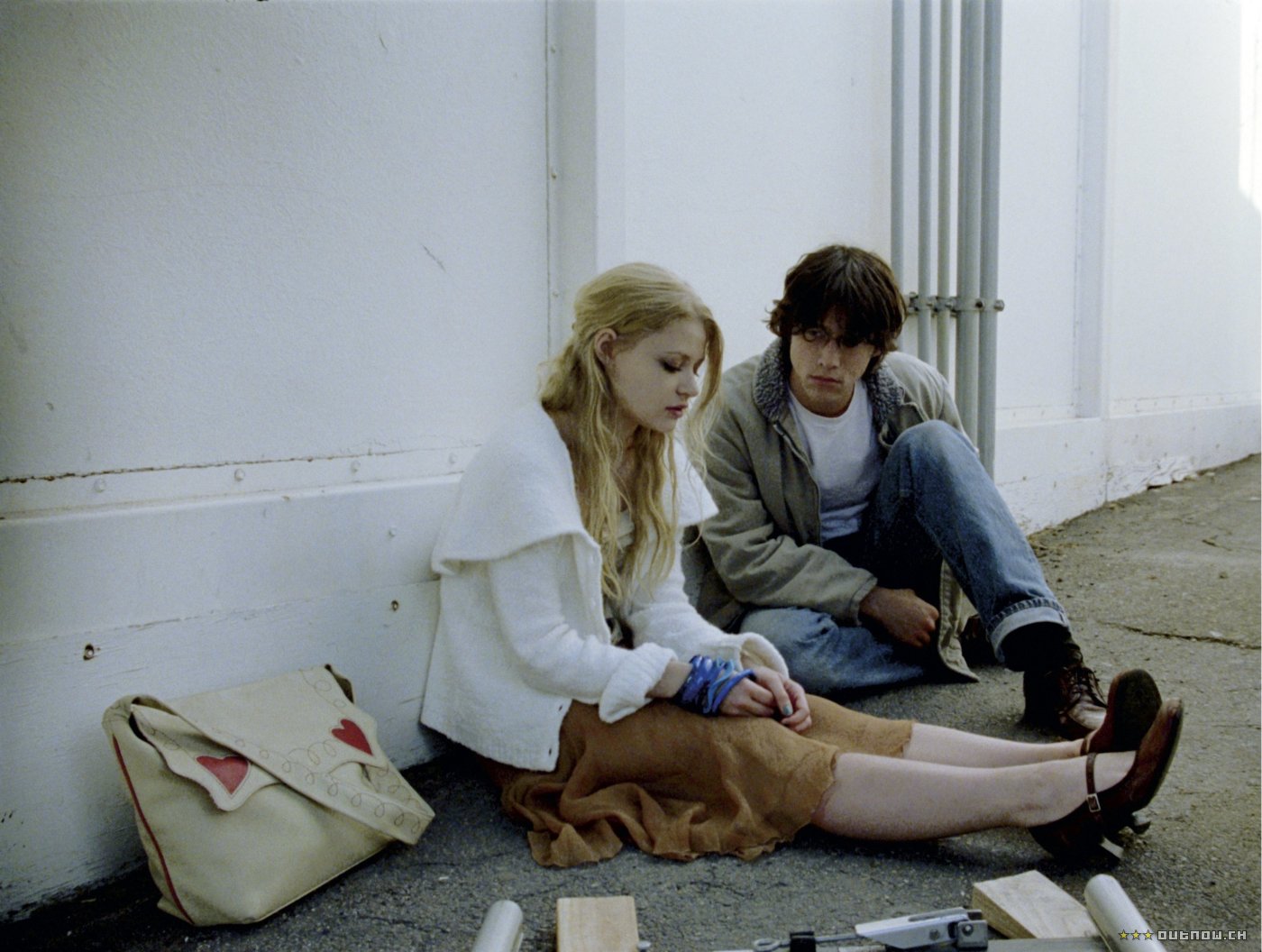
Rian Johnson’s debut feature is film noir, meets high school drama, and while the premise sounds satirical, the narrative is played strait. The film follows Brendan (Joseph Gordon Levitt), a P.I. type protagonist, who has to scour through the lies and deceit of he’s fellow high schoolers in order to track down he’s missing ex-girlfriend.
Brick’s femme fatale is Laura, a poplar girl who spends her time hanging with the drama kids because, what femme fatale doesn’t like drama? The true magnetism of her character is the perception of moral ambiguity, as she appears to be emotionally detached, leaving Brendan (and audiences) to make presumptions about where her allegiance lies. Laura is distinctively the youngest character on this list, but she is not to be under estimated, as she carries herself with the grace and know-how of a worldly siren.
15. Mal (Marion Cotillard) – Inception (Christopher Nolan, 2010)

While femme fatale may not be the first word that comes to mind when discussing Christopher Noland’s mind-bending sci-fi caper, the character of Mal plays a pivotal role within the film, and is the antagonist that Cobb Must overcome.
Set in a world where the technology exists for people to enter dreams, Cobb (Leonardo DiCaprio), a professional thief/extractor, assembles a team to dive into the mind of a CEO, in order to incept a critical notion into he’s subconscious. But, to the dismay of Cobb’s crew, he has some psychological baggage that follows him in he’s dreams and memories.
Although many femme fatales are portrayed as neurotic, Mal’s circumstances are more empathetic, because she exists in a world where dreams and reality can become indistinguishable. Tragically, she loses her grip on what is truly real, and by that, I mean her husband and children. What is distinctive about her character, is that she is a manifestation of Cobb’s guilt and insecurities, making her as dangerous as he’s mind allows her to be.
16. Vera (Ann Savage) – Detour (Edgar G. Ulmer, 1945)
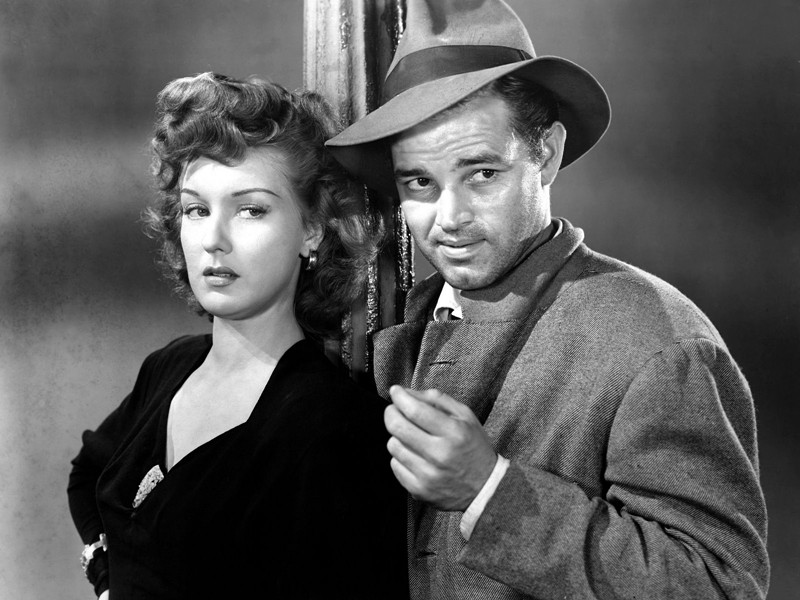
Based on Martin M. Goldsmith’s novel of the same name, this thought-provoking film noir embraces the road movie genre, as well as being a psychological crime drama. Detour tells the tale of Al (Tom Neal), a man who intends to hitchhike he’s way to California, with the intention of being with he’s fiancé. However, when the driver loses consciousness and won’t wake up, Al goes from one bad situation to the next.
Vera is this film’s femme fatale, and she just happens to be Al’s worst situation. From the moment Al picks her up, to the last time she’s seen on screen, Vera conveys a relentless intensity that rarely lets up. What she lacks in character development and back-story, she makes up for with a cynical world-view, that tells us everything we need to know about her persona.
17. Amy Dunne (Rosamund Pike) – Gone Girl (David Fincher, 2014)
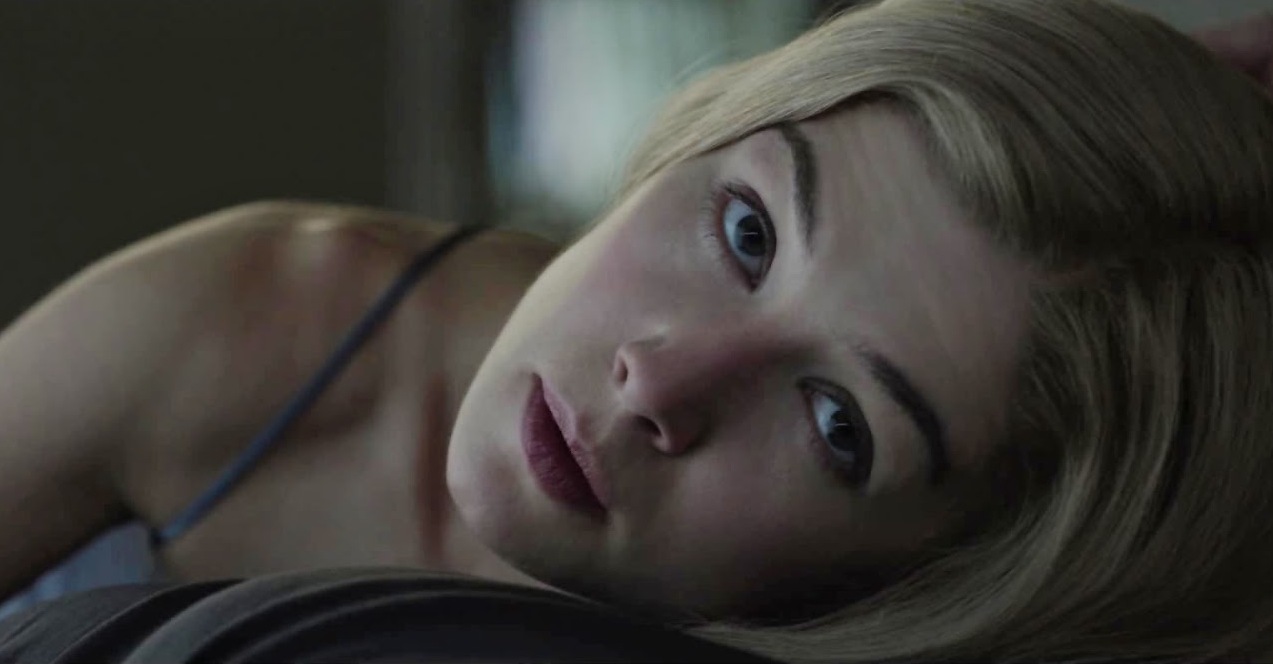
Directed by David Fincher (Se7en) and based on the book by the same name, Gone Girl is a psychological excursion into the mind of Amy Dunne, a woman who resents her husband, Nick (Ben Affleck), for the way their marriage turned out, and will do anything to see him suffer for that. The narrative is revealed through present day events, which are juxtaposed against flashbacks based on Amy’s diary entries, and while all appears well in the beginning of their relationship, trouble arises when Nick come home to find he’s wife is missing.
What is refreshing about Gone Girl is that it gives us a look into the psyche of a femme fatale, showing us how she justifies her actions, and while her character is unsympathetic by the end of the film, this approach at least helps audiences empathise with her. For example, in an early scene, it’s revealed that Amy’s parents used her as the inspiration behind a fictional novel character, who just happens to be successful in all the areas that Amy had fallen short in life.
Ironically, as an adult, Amy creates fictional personas for herself that she plays out in real relationships, leading to fatal results. As an antagonist, Amy’s dedication to her cause is admirable, as she diligently talks us through her narcissistic, sociopathic trains of thought. This film is all about the power of perception, from the media to the public, and Amy is a master of manipulation.
18. Jessica Rabbit (Kathleen Turner/Amy Irving) – Who framed Roger Rabbit (Robert Zemeckis, 1988)
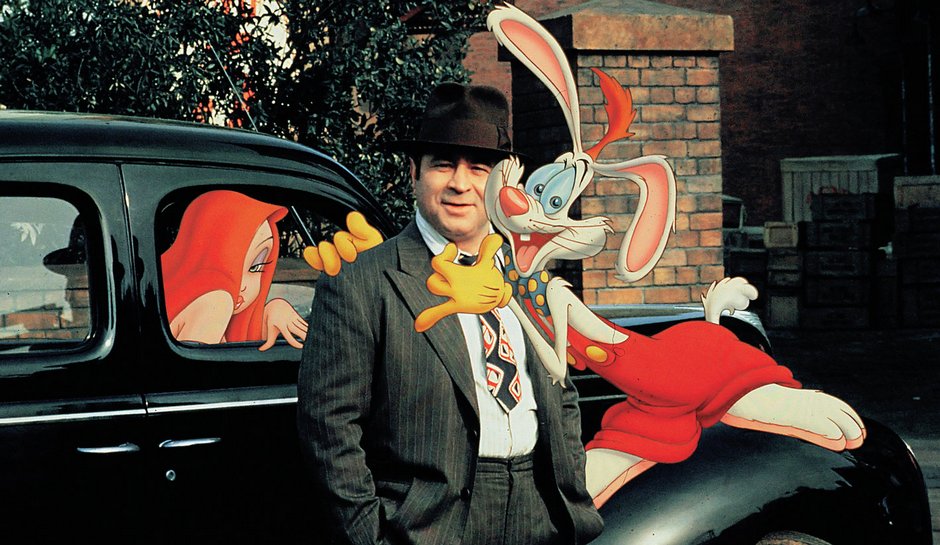
In 1988, live-action and animation would come together for this scintillating neo-noir satire, that has fun with both cartoon and film noir conventions. Set in a world where humans walk amongst cartoons, a former detective (Bob Hoskins) who has a prejudice against cartoons, sets out to prove the innocence of a cartoon rabbit.
“I’m not bad, I’m just drawn that way”
Jessica Rabbit has the body of Marilyn Monroe in The Asphalt Jungle, and the (literal) voice of Body Heat’s Kathleen Turner. She is the perfect storm of femme fatales, as her accentuated features hold the gaze of male characters, cartoons, and audiences alike. Be that as it may, the notion of Jessica as caricature is superficial, as she manages to transgresses her archetypical profile through self-awareness and autonomy, making her a well-rounded character (excuse the pun.)
19. Katherine Marsh (Joan Bennett) – Scarlet Street (Fritz Lang, 1945)
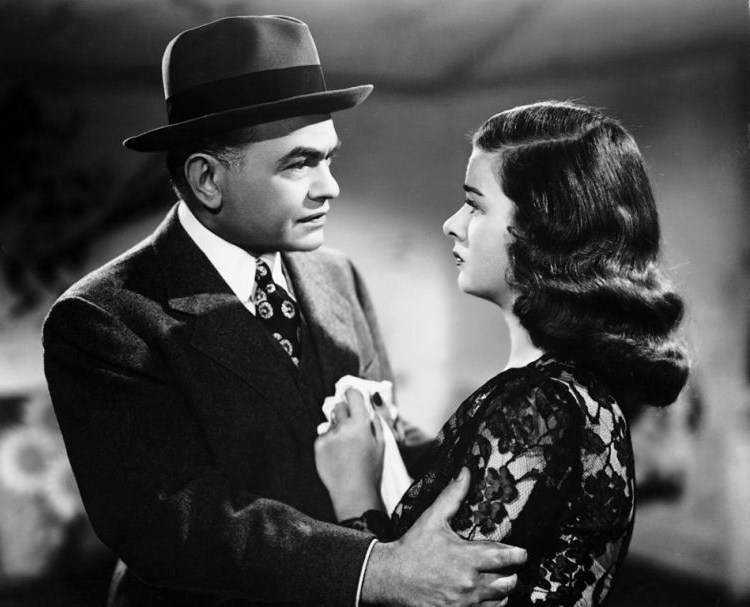
German expressionist and film noir pioneer Fritz Lang delivers a convoluted tale of blind love and opportunisms, in this cynical and darkly humorous narrative. Based on the French novel ‘La Chienne’, the film follows two small time hustlers, Katherine Marsh and Johnny Prince (Dan Duryea), as they con the desperate and naïve Christopher Cross (Edward G Robinson) for he’s supposed fortune.
Early in the film, Katherine is presented as a street wise, autonomous femme fatale, who is taking the age-old route of deception in her stride, as she is clearly playing Christopher along. It’s because Lang presents us with clues as to the kind of woman that Katherine is, that we can have fun with her over-the -top flirtations and idiosyncrasies.
However, the film takes an interesting turn when we realise that the woman stringing along Christopher, is herself being stringed along by a man who is manipulating her, and this makes the perception of this femme fatale divisive. Her character is sympathetic because of the way she is used by her boyfriend Johnny, as well as Christopher being in love with her, purely based on superficialities such as youth and beauty.
Regardless, her relationship with Johnny brings out a villainous side in her. The three-way interactions between Katherine, Johnny and Christopher become a hierarchy of manipulation, with Johnny being at the top. By the end of the film the message is profoundly delivered, that blind love can be the downfall of anyone. The character of Katherine is a mercurial performer, who looks angelic in white, and ominous in black, regardless, her appeal is irresistible.
20. Suzanne Stone (Nicole Kidman) – To Die For (Gus Van Sant, 1995)
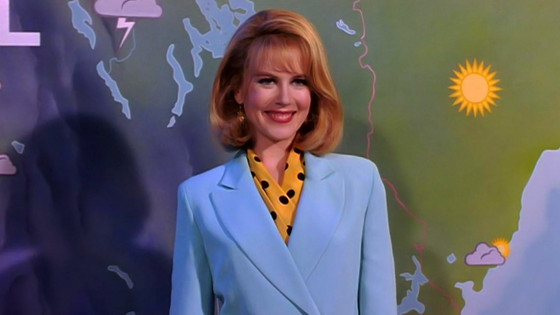
To Die For’s Nichole Kidman thrives as the character Suzanne Stone, a naïve dreamer who is often underestimated and passed off as just a pretty face. Inspired by the true story of Pamela Smart and based on the novel by the same name, Gus Van Sant’s pitch-black comedy explores the lengths to which one woman will go to in order to reach the top, as she ploys to convince her teenage lover to kill her husband.
As a film, To Die For’s plot is quite generic, and Suzanne’s ploy lacks the sophistication and originality of some of the most infamous femme fatales. Yet, the film’s satirical tone and Kidman’s performance, give it a certain charm, as she effortlessly wraps the male characters around her finger.
What’s sympathetic about Suzanne however, is that she just wants to be taken seriously as a professional woman, yet her husband merely sees her as a housewife, while in the media industry, she is subjected to constant objectification and sexual advances, eventually driving her to breaking point. Suzanne’s drive is admirable, however, when that same drive becomes obsession, she is the cause of her own downfall.
Author Bio: Andre Grier is a film and media lecturer, teaching contextual studies at college level. He is a Masters of Arts graduate of ‘Film & Television studies: Theory Culture & Industry’. Above all, he is a passionate cinephile, with a broad knowledge of the film medium.